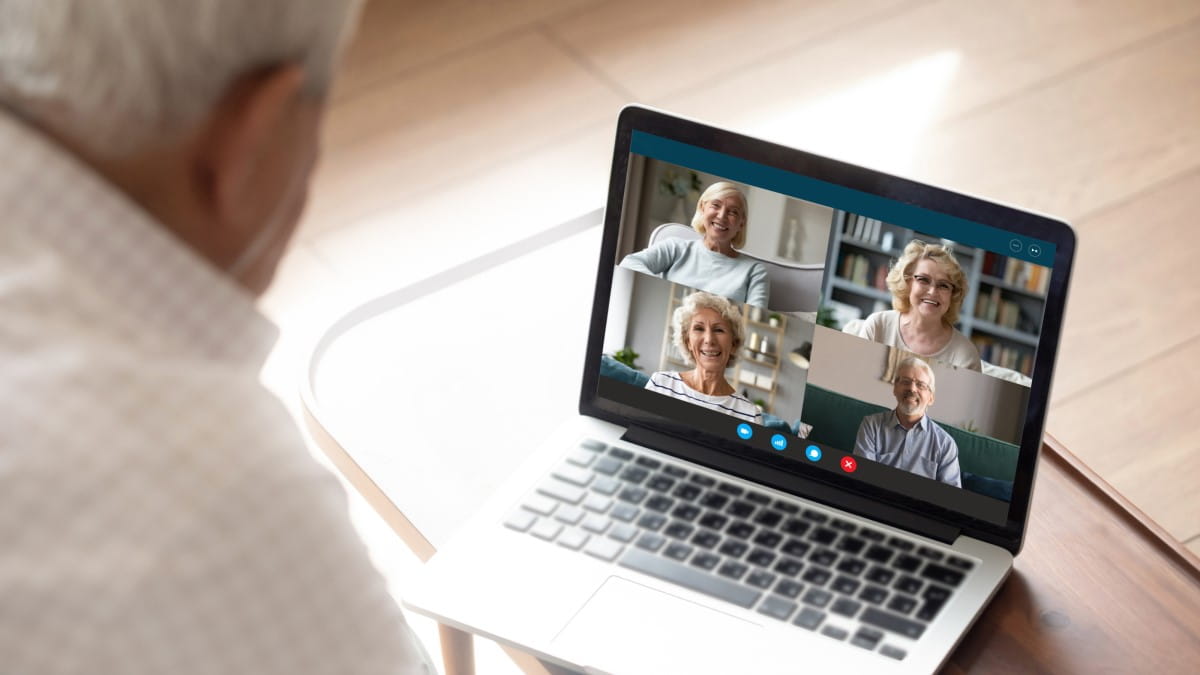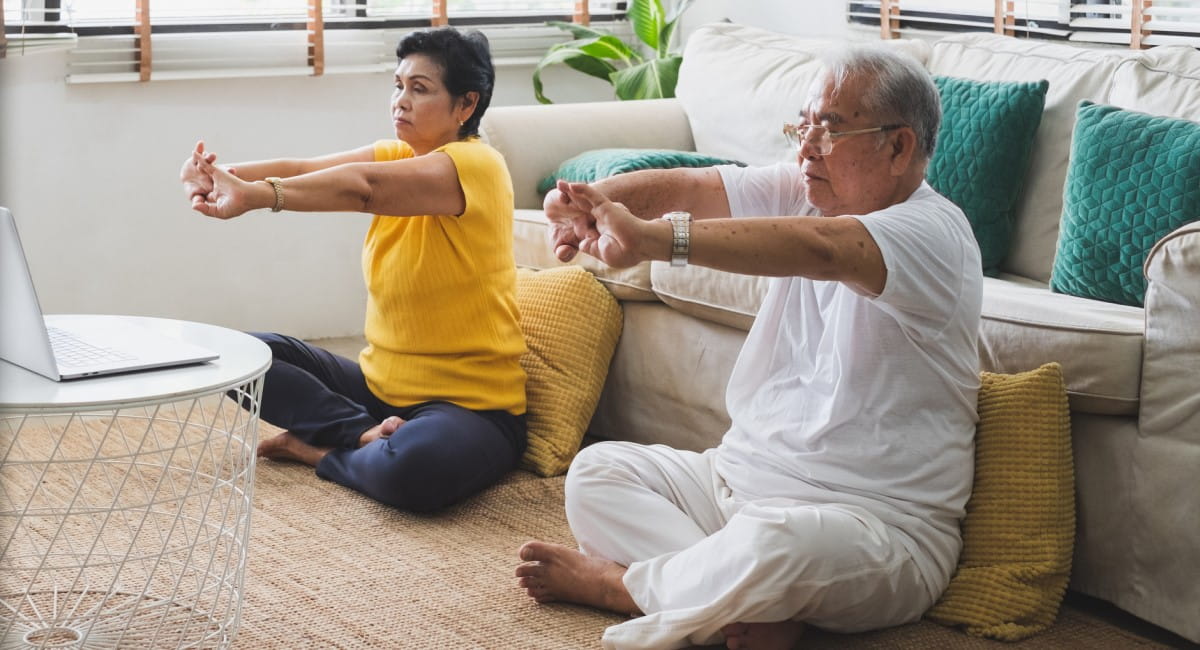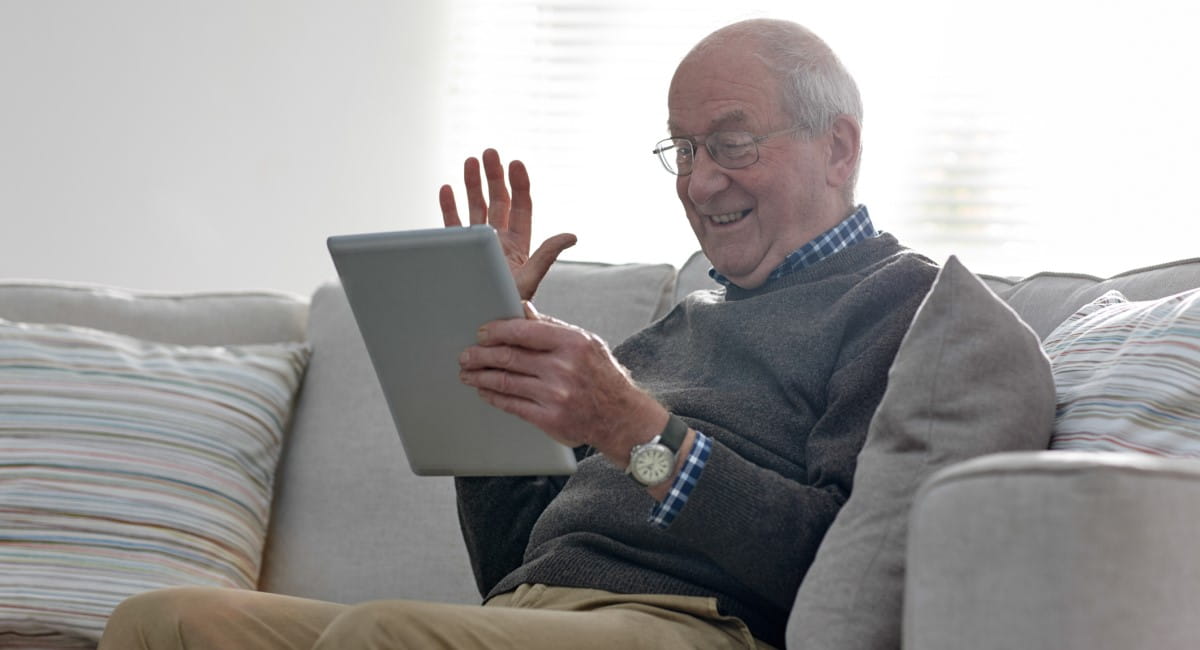“Lockdowns and social distancing are important measures to keep Australians safe, but the isolation can lead to loneliness, which has several adverse impacts on mental health.”—Elleni Bereded-Samuel AM, Australian Unity’s Executive Manager of Diversity and Capability Development, Independent & Assisted Living.
In June 2020, mere weeks before Melbourne entered a 112-day lockdown, Australian Unity launched a pilot digital-literacy program at Victoria Grange Retirement Community in Vermont South.
Run in partnership with the University of the Third Age (U3A), the project aimed to build residents’ confidence using computers and smart phones, so they could participate in activities and connect with people online. Under the guidance of U3A, they learnt to use Zoom, create virtual meeting groups and navigate their way around various devices.
Participants didn’t have to wait long to put their new skills to the test.
Once lockdown began in July 2020, technology became a critical resource for maintaining connection with the outside world, says Elleni Bereded-Samuel AM, Australian Unity’s Executive Manager of Diversity and Capability Development, Independent & Assisted Living.
“I was thinking about how our residential communities were coping during the lockdown and came up with the idea that the best way of connecting our residents was via digital technology,” she explains. “Lockdowns and social distancing are important measures to keep Australians safe, but the isolation can lead to loneliness, which has several adverse impacts on mental health.”

Conscious that not all residents may be tech savvy, Elleni invited U3A to set up the pilot project and share their experiences working with seniors in digital technology.
A steering committee was established and one of its first recommendations was to activate Victoria Grange’s closed-circuit television channel, VGTV 501. Speaking on behalf of the committee—a 10-strong contingent of residents known as The Village People—Barry Joy, 85, and Denis Street, 80, say the channel and community website were the ideal media to communicate information and screen activities.
“Most residents have digital facilities and are able to access Zoom and the community website,” Barry explains. “All residents have a television set, so VGTV 501 was the way to ensure everyone was being reached to help ease isolation during the COVID lockdowns.”
The channel and website hosted instructional sessions to help residents form an assortment of Zoom groups, including a book club, family history group, technical support group, men’s group, tai chi class, cooking class and virtual happy hour. The latter proved particularly popular, attracting around 20 households at its peak.

“Everyone thought it was a hoot,” Barry says. “It was good for people to get together when they mightn’t have seen each other for a week or two, or more.”
Daily line-ups also featured exercise videos, music and other light entertainment, as well as a resident photo gallery—a valuable feature for couples and friends living in separate parts of the community.
Elleni shares the story of one resident who showed her husband the photo stream during a visit to the aged care facility where he lives. “He saw some of his friends and smiled for the first time in a long while,” she says.
Though most social groups resumed face-to-face meetings once restrictions lifted, the pilot program continued to prove itself useful over the past year as snap lockdowns came and went—allowing residents to maintain their normal routines, albeit at a distance.
“If there’s benefit, we can just crank up Zoom at short notice and meet one way or another,” Denis says. Even when lockdowns end, but limits on social gatherings remain, large groups have the option to meet online, he adds.
Residents are still using their technical knowledge outside the community, too. Having learnt to use Zoom, people are now confident to contact their families via the platform.

“One of the ladies was able to talk to her grandchild, who she hadn’t seen for a long time because of the lockdown,” Elleni recalls. “Since then, she knows how to access Zoom and talks to her family and grandchildren every other day.”
That’s not to say the program has been without challenges. The steering committee found that some Zoom groups were more successful than others; a music group, for example, was abandoned due to technical limitations and time delays. “There is no substitute for personal contact,” Barry admits. “Nevertheless, they brought people together and did
ease some isolation.”
While Elleni plans to take the program to other retirement communities—and one day create intercommunity social networks—she hopes for now that Victoria Grange residents continue to embrace their newfound skills, even beyond lockdown.
“They can use technology to do anything they want,” she says, flagging the possibility of late night virtual book clubs, or storytelling sessions between people from different walks of life.
Meanwhile, The Village People are preparing to supplement their technical toolkit with classes encouraging safe use of the internet for banking, medical and chemist services. Further improvements to VGTV 501 are also in the pipeline.
Had it not been for the impetus of lockdown, Barry believes it’s unlikely such developments would have come about. “So much more was gained out of the project than I think would have been the case otherwise,” he says. “The intention was to increase digital literacy—and it certainly did that.”
Disclaimer: Information provided in this article is of a general nature. Australian Unity accepts no responsibility for the accuracy of any of the opinions, advice, representations or information contained in this publication. Readers should rely on their own advice and enquiries in making decisions affecting their own health, wellbeing or interest. Interviewee names and titles were accurate at the time of writing.


